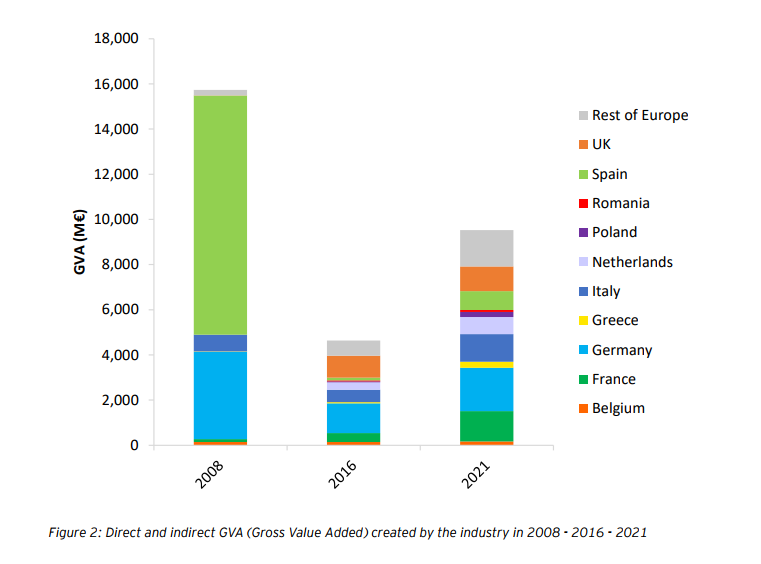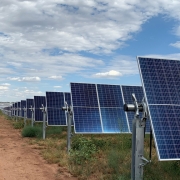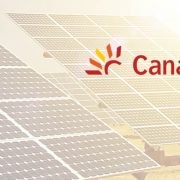Solar expected to provide 335,000 jobs by 2030 in Europe with a 35% RE target, EY report says
Solar jobs and wealth creation in Europe are set to increase to nearly 175,000 full time jobs and 9,500M value added by 2021, according to a new EY report. The EY report also shows that an increase in ambition for the European Union 2030 renewable energy target from 27% to 35% will result in more than 120,000 new solar jobs alone.
Although the European Photovoltaic sector has been severely challenged in terms of installed capacities and turnover since 2011-2012, the sector continues to prove its socio-economic value in Europe, both in terms of job creation and Gross Value Added (GVA).
With a 35% RE target, 118 GW of additional capacities will be required (328 GW in total) such that solar energy would contribute about 10% of the electricity demand (source: SolarPower Europe low scenario). Job support will increase by 56% compared to 27% RE target scenario and by a factor of 1.6 compared to 2020 (around 335,000 jobs in total).
If EU countries realise their solar installation targets, over 335,000 #EUsolarjobs could be created by 2030! Read more about solar's potential for jobs in our report here: https://t.co/7O5W8Ytpks pic.twitter.com/FkCycnG8GB
— SolarPower Europe (@SolarPowerEU) December 6, 2017
Key findings from the study:
- Despite recent reductions in job and added value creation by the PV industry in Europe, this trend is set to be
reversed, with increased job creation and GVA in the coming years. - With a RES target of 35% in the Renewable Energy Directive, instead of the current 27%, job provision would increase by 56% in the solar industry alone.
- The removal of the anti-dumping measures that are currently in place would have a positive effect on employment throughout the value chain in Europe. In such a scenario, 45,500 additional (direct and indirect) jobs would be created in the EU28.
- Although the European Photovoltaic sector has been severely challenged in terms of installed capacities and turnover since
2011-2012, the sector continues to prove its socio-economic value in Europe, both in terms of job creation and Gross Value Added (GVA). - In 2016, the PV sector in the EU28 represented more than 81,000 full-time Equivalents (FTEs) and more than €4,600M GVA created.
- By 2021 it is expected to sustain nearly 175,000 FTEs and to generate nearly €9,500M GVA on a European level.
- Yearly installed capacities in the European countries clearly have a significant impact on job and GVA creation, as there is a direct impact on manufacturing and services needed.
- Only three countries (France, the Netherlands and the UK) had significantly higher annual installed capacity in 2016compared to 2008.
The average PV system price in Europe has decreased by 23% in 2016 compared to 2014. - In 2016, rooftop PV installations support almost 3 times as many jobs and GVA than ground-mounted installations. This can be explained by their installed capacities and labor needs for installation, maintenance and operations.
- Respectively 75% and 73% of the share of jobs and GVA in 2016 is linked to the downstream activities of the PV value chain. Downstream activities of the PV value chain are more labor intensive than upstream activities.
- The manufacturing of Balance of Systems (BoS) represent nearly half of the upstream share of jobs and GVA creation in 2016.
- Downstream, a strong growth by 2021 is expected in the share of ‘Installation’ in both jobs and GVA supported.
Dominique Ristori, Director-General, European Commission, DG Energy, speaking at the launch event of the report, said:
“We want to see solar and clean energy well-developed in Europe, more solar jobs and generated value is key to moving towards a sustainable lowcarbon economy. Crucially in the short term, removing solar trade measures currently enforced by DG Trade in the European Commission could give a welcome boost to the European solar industry including new jobs.”
MEP Marijana Petir, stated:
“This surge is only possible if countries increase their solar deployment rate in line with policy requirements to 2020. With the right policies in place this growth could be even greater by 2030. Member States should have the necessary flexibility to boost renewable energy that is available on their territory. With this approach Member states could develop incentives to reduce the greenhouse gas emissions and to create new jobs in the most efficient way.”
EY said on their findings for the report:
“Our calculations show that Spain will have the highest number of new jobs, with an expected growth of 471% from 2016 to 2021, followed by Greece (+403%), and Poland (+381%)” .
Christian Westermeier, President of SolarPower Europe said:
“The more solar installed the more jobs and economic growth we will see in Europe. We need to remove all barriers to solar starting with withdrawing the trade measures currently in place on solar panels and cells accompanied by a predictable regulatory environment for PV in Europe. EY found that the average PV system price in Europe has decreased by 23% in 2016, compared to 2014, but we know that the price could be even lower if we ended the artificially high tariffs on solar products, which would boost jobs and economic activity in the countries of the EU.”
Source: Press Release by SolarPower Europe. Photo Credit: SolarPower Europe.












